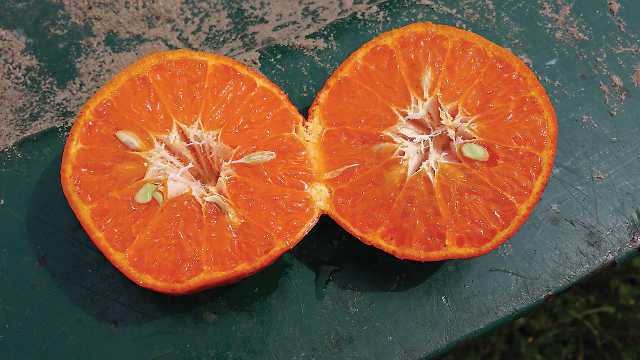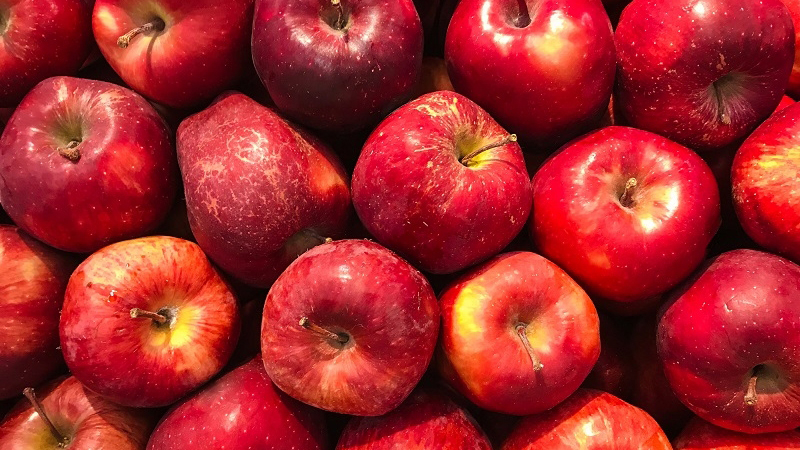Experimental Citrus Scion Selection Program Poised For Progress
Last September’s installment of “Citrus Nursery Source” announced pending trial opportunities for promising USDA-ARS citrus scion selections. Details of the program are now available and growers are registering for the program. Although trees have already been propagated for these trials, it is important citrus nurseries maintain an awareness of this program. Growers will be following the progress of these trials and may seek additional information from nurseries.
The USDA-ARS citrus breeding program has been actively developing improved varieties for more than 100 years. For these trials, the ARS team (Ed Stover, Greg McCollum, James Salvatore, and Randy Driggers) identified a range of citrus selections that are ready to move into field trials. Rather than traditional replicated field trials at ARS sites, ARS has solicited the assistance of New Varieties Development & Management Corp. (NVDMC) to engage growers in the field trial process. This program will be a cooperative effort between growers and USDA and will generate real-world data early in the process. Trials of this nature can greatly reduce the time needed for researchers to identify winners, losers, and selections that can contribute to future research. Participating growers will be able to use the fruit for processing or for sale in niche markets, but with identity kept confidential to preserve potential for patenting (USDA only patents cultivars when it enhances impact by making them more useful to the industry).
There are three groups of plants:
1. Orange-Like Hybrids
Though these complex hybrids are not pure sweet orange, they have shown some tolerance to HLB, but flavor volatiles and other characteristics are similar to sweet orange. The selections are all early, ripening around the time of Hamlin. There are four such orange-like hybrids.
- A trial would entail eight trees of each experimental selection at each site. This would be a total of 32 trees of the trial selections at each site.
- In addition to the four experimental selections, each site will feature eight trees each of Hamlin, Glenn navel, and Thompson navel as controls. The additional 24 control trees would bring the total to 56 trees per site.
- Grower participants will be required to reimburse for the cost of tree-production expenses.
- All trees are on X-639 rootstock.
- NVDMC is seeking six sites (two in the Gulf, one in the River, one in the Peace River, and two on the Ridge).

Identity yet a secret, here is one of the orange-like selections in the trial group. Photo courtesy of USDA-ARS
General Descriptions
- Early ripening (December) orange hybrid, which can be peeled with fingers alone. Juice color scores are similar to Valencia numbers (40) and preliminary juice quality work indicates that the juice is very much like pure orange juice.
- Early ripening (December) orange hybrid with excellent juice color (40+) and high juice quality. Juice appears to be very similar to pure orange juice, and has a rich orange-like taste.
- Early ripening (December) orange hybrid with large fruit size and excellent juice color. Many fruit on the original tree have been near Glenn navel size. Juice appears to be very similar to pure orange juice, and color scores have been similar to Valencia numbers.
- Large fruited complex hybrid, which is similar to an orange in taste and internal texture. External appearance is unusually pebbly, but in trials so far it appears to have a greatly enhanced level of tolerance to HLB when compared to commercial varieties.
2. Mandarin Hybrids
All of the mandarin hybrids have been selected for their exceptional quality and for their apparent increased tolerance to HLB compared to other tangerine varieties. These selections do have seeds, but each are easy peeling and have good flavor. There are six mandarin hybrids in the suite.
- A trial would entail eight trees of each experimental selection at each site. This would be a total of 48 trees of the trial selections at each site.
- In addition to the six experimental selections, each site will feature eight trees each of W Murcott and US Early Pride as controls. The additional 16 control trees would bring the total to 64 trees per site.
- All trees are on X-639 rootstock.
- Grower participants will be required to reimburse for the cost of tree-production expenses.
- NVDMC is seeking six sites (two in the Gulf, one in the River, one in the Peace River, and two on the Ridge).

One of the eight mandarins in the trial group. Photo courtesy of USDA-ARS
General Descriptions
- Medium-sized Christmas ripening tangerine hybrid with good color, moderately easy peeling, good taste and internal texture, and usually doesn’t plug badly. It has Satsuma in its background and has shown minimal damage over several freezes at 20°F to 24°F.
- Small-to-medium-sized early ripening tangerine hybrid. Fruit peel very easily and also plug readily. Color and taste are both good. Has Satsuma in its background and has shown minimal damage over several freezes at 20°F to 24°F.
- Medium-sized tangerine hybrid with good color and moderately good picking and peeling characteristics. Good fruit texture and segment separation. Taste is somewhat tart but good. This selection has done well at fruit shows.
- Low-seeded version of one of our best overall tangerine selections. Usually ripens after Christmas. Has very good picking characteristics, segment separation, and color. The taste is very good to excellent. The fruit don’t plug badly but are still easy to peel.
- Medium-sized tangerine selection with good color, especially internally. It has smooth, thin skin. It might be able to be picked without clipping and has excellent dry segment separation. It usually ripens in late November and has a sweet taste.
- Medium-sized late November ripening tangerine, which is easy to peel and has dry segment separation. The color is very good externally and good internally and the taste is good. This selection seems to have a usable level of tolerance to HLB. Cross pollination is required.
3. Trees Made From Treated Buds Of Jackson And US Seedless Surprise Grapefruit Hybrids
Each of these selections have mild grapefruit-like flavor, but have white flesh. It is hoped these trials will result in red variants of the original varieties.
- A trial would entail 50 to 100 trees of each variety at each site.
- There will be no control varieties planted with this trial.
- All trees are on sour orange rootstock.
- Grower participants will be required to reimburse for the cost of tree production expenses. Growers must maintain trees for a minimum of five years.
- NVDMC is seeking six sites for these trials.
All trees are expected to be ready for planting in March 2015. The trial sites will be awarded on a first come, first served basis. All growers will be required to sign a Material Transfer Agreement. This documentation is available from NVDMC for review prior to registration. Growers interested in participating can contact me by eMail for more details.










